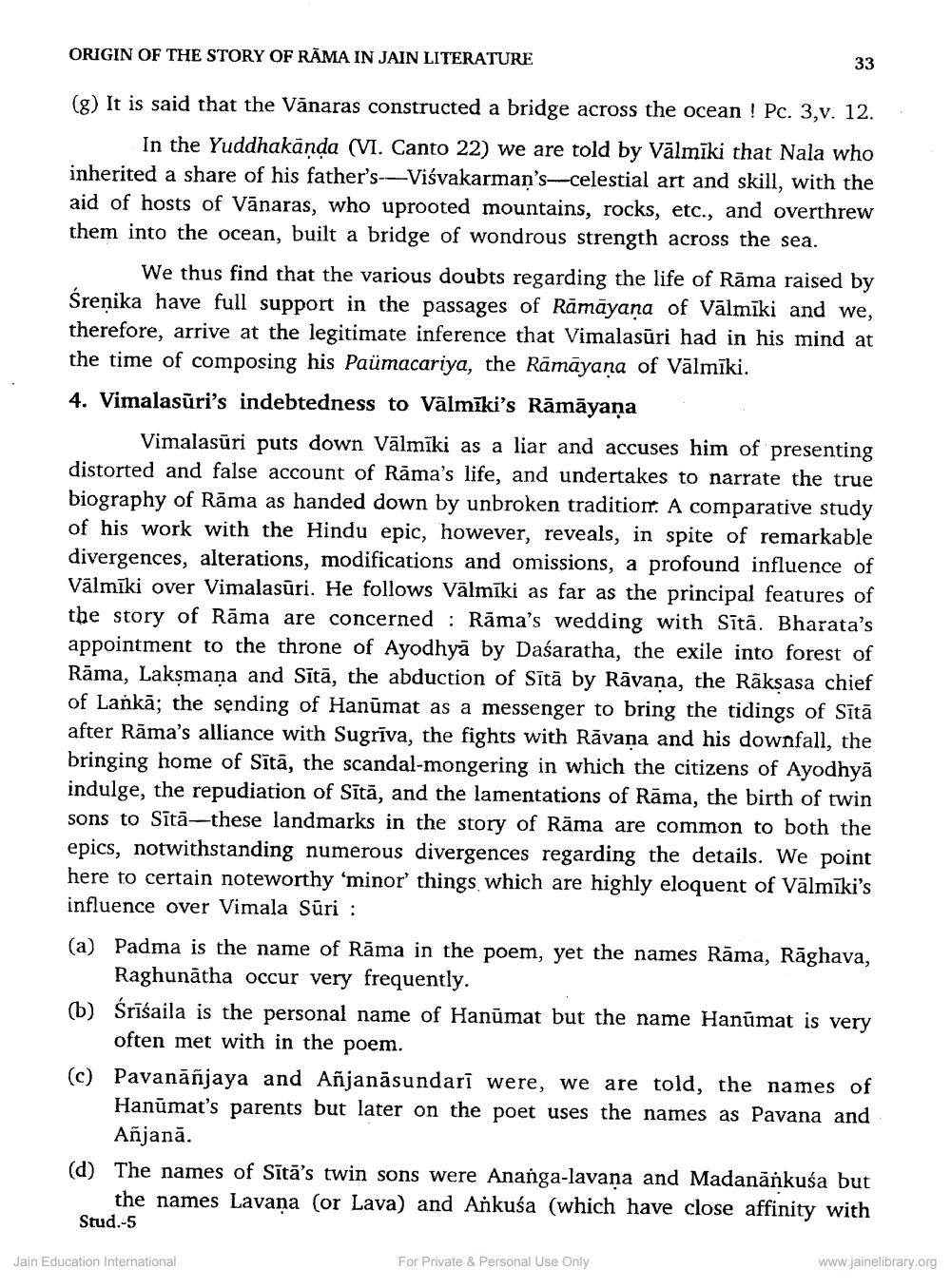________________
ORIGIN OF THE STORY OF RĀMA IN JAIN LITERATURE
(g) It is said that the Vanaras constructed a bridge across the ocean ! Pc. 3,v. 12.
In the Yuddhakānda (VI. Canto 22) we are told by Vālmīki that Nala who inherited a share of his father's--Viśvakarman's celestial art and skill, with the aid of hosts of Vanaras, who uprooted mountains, rocks, etc., and overthrew them into the ocean, built a bridge of wondrous strength across the sea.
We thus find that the various doubts regarding the life of Rāma raised by Śrenika have full support in the passages of Rāmāyana of Vālmīki and we, therefore, arrive at the legitimate inference that Vimalasūri had in his mind at the time of composing his Paümacariya, the Rāmāyana of Vālmīki. 4. Vimalasuri's indebtedness to Vālmīki's Rāmāyana
Vimalasūri puts down Vālmīki as a liar and accuses him of presenting distorted and false account of Rāma's life, and undertakes to narrate the true biography of Rāma as handed down by unbroken traditiorr. A comparative study of his work with the Hindu epic, however, reveals, in spite of remarkable divergences, alterations, modifications and omissions, a profound influence of Vālmīki over Vimalasūri. He follows Vālmīki as far as the principal features of the story of Rāma are concerned : Rāma's wedding with Sītā. Bharata's appointment to the throne of Ayodhyā by Daśaratha, the exile into forest of Rāma, Laksmana and Sītā, the abduction of Sītā by Rāvana, the Rāksasa chief of Lankā; the sending of Hanūmat as a messenger to bring the tidings of Sītā after Rāma's alliance with Sugrīva, the fights with Rāvana and his downfall, the bringing home of Sītā, the scandal-mongering in which the citizens of Ayodhyā indulge, the repudiation of Sītā, and the lamentations of Rāma, the birth of twin sons to Sītā-these landmarks in the story of Rāma are common to both the epics, notwithstanding numerous divergences regarding the details. We point here to certain noteworthy 'minor things which are highly eloquent of Vālmīki's influence over Vimala Sūri : (a) Padma is the name of Rāma in the poem, yet the names Rāma, Rāghava,
Raghunātha occur very frequently. b) Srīsaila is the personal name of Hanūmat but the name Hanūmat is very
often met with in the poem. (c) Pavanāñjaya and Añjanāsundarī were, we are told, the names of
Hanumat's parents but later on the poet uses the names as Pavana and
Añjanā. (d) The names of Sītā's twin sons were Ananga-lavana and Madanāňkuša but
the names Lavana (or Lava) and Ankusa (which have close affinity with Stud.-5
Jain Education International
www.jainelibrary.org
For Private & Personal Use Only




